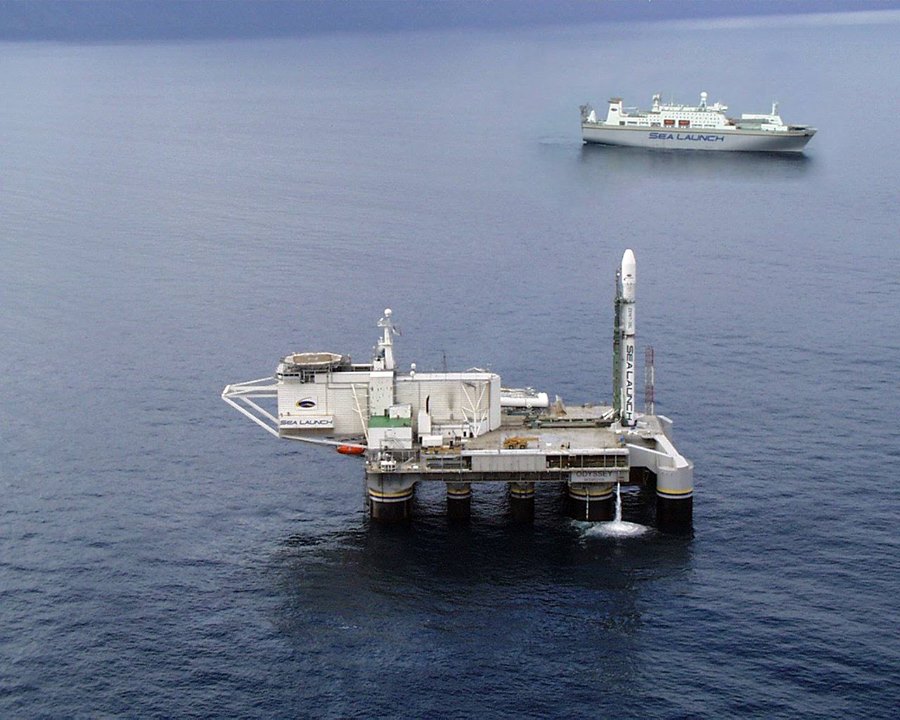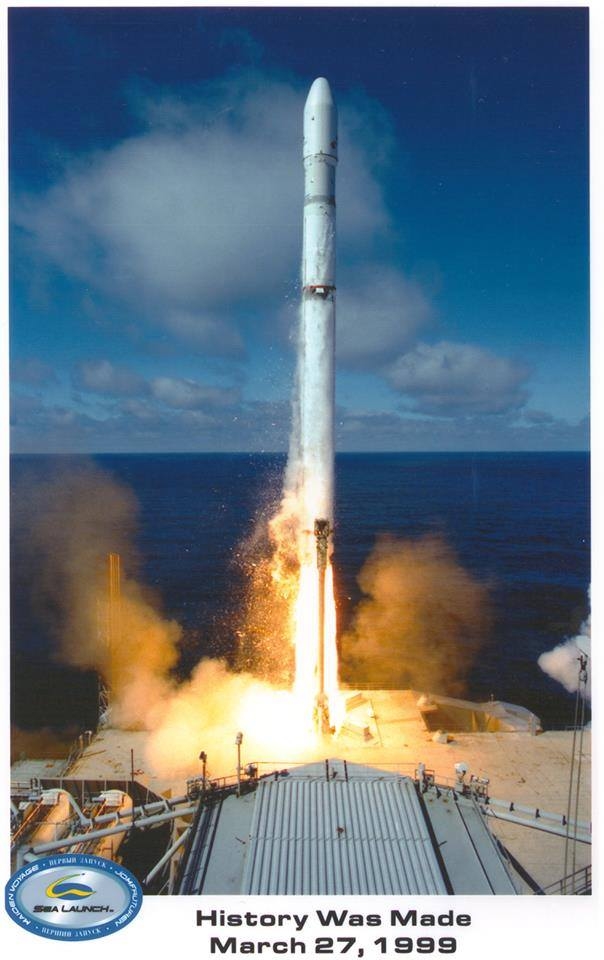Press-center
Press-center

SEA LAUNCH CELEBRATES 20TH ANNIVERSARY
On March 28, 1999, maiden launch of the Zenit-3SL rocket took place from the Odyssey floating platform, positioned on the equator in Pacific Ocean not far from Christmas Island. Demo mockup DemoSat, weighing 4,5 tons, was placed into the near-Earth orbit. Six years of laborious work by the big international team have preceded this milestone event.
Joint venture Sea Launch was organized in 1995 to conduct commercial launches of satellites from the sea-going cosmodrome in Pacific Ocean. In the first phase, its shareholders included American Boeing, Russian RSC Energia, Ukrainian Yuzhnoye SDO and PA Yuzhmash and English-Norwegian Кvaerner Group.
Launching spacecraft from the surface of the ocean is an outstanding engineering achievement of the late XXth century. It has opened new trend in the aerospace technology, having demonstrated that to use ocean as a launch pad is not only technically feasible, but also economically sound.
Basic idea of launching from the ocean surface is simple and ingenious: a rocket can be launched precisely from the equator where rotation of the Earth contributes to the maximum speed increment and where there are no impact area restrictions for the spent rocket stages. Complexities in realization of the sea launch included necessity of the non-polluting rocket (its fuel should be harmless for the ocean), automatic mode launching (since people cannot be around launching rocket) and capability to launch in the conditions of sea disturbance. Based on these factors, Zenit rocket, developed in Yuzhnoye SDO and serially manufactured by Yuzhmash plant, was selected as a launch vehicle, possessing the most advanced performance and operating characteristics, complying with sea launch requirements.
With sea basing the launch platform can be theoretically positioned in any point on the surface of the ocean and change it, depending on the launch mission with capability to launch the rocket with any azimuth. So, it is possible to launch in any direction from an equatorial zone of Pacific ocean, from selected for Sea Launch point of launch at latitude 0° North and longitude 154° West. Since Zenit-3SL is environmentally friendly (combustion products are, basically, water and carbon dioxide), question of ocean pollution stands no longer. Possibility to use equatorial zone as a cosmodrome essentially enhances efficiency of SC launching into geostationary orbit (GSO). Payload capability of Zenit-3SL when launched from equator enhances in comparison with launch of launch vehicle of similar configuration from Baikonur cosmodrome (Kazakhstan).
Despite successful technical realization of the project, owing to many factors Sea Launch company could not provide profitability of launching activity under the project and in the summer of 2009 declared the bankruptcy, and following the reorganization Boeing has shifted the leading part in the project to RSC Energia. In September 2011 launches renewed.
From March 1999 until May 2014 36 launches of Zenit-3SL were performed within the framework of Sea Launch, 33 of which being successful. The latter took place on May 27, 2014: European communication satellite Eutelsat 3В was orbited.
In the autumn 2014 RSC Energia declared the Sea Launch project closed. Yuzhnoye SDO management has attempted to convince the owners to change their minds. In November 2014 A.V. Degtyarev, Yuzhnoye SDO General Director spoke at the meeting of Sea Launch Board of Directors with the report, arguing in favor of project continuation under the condition of optimization of project administration and reduction in operating costs. After this report, the Board of Directors withdrew from closing the Sea Launch and started negotiation process with potential investors.
In 2018 group of companies S7 Group became the owner of the Sea Launch.
Over its lifetime Sea Launch project faced technical, financial and political challenges. However, up to now it remains a unique instance of the international cooperation in aerospace sector and has prospects to go on.


